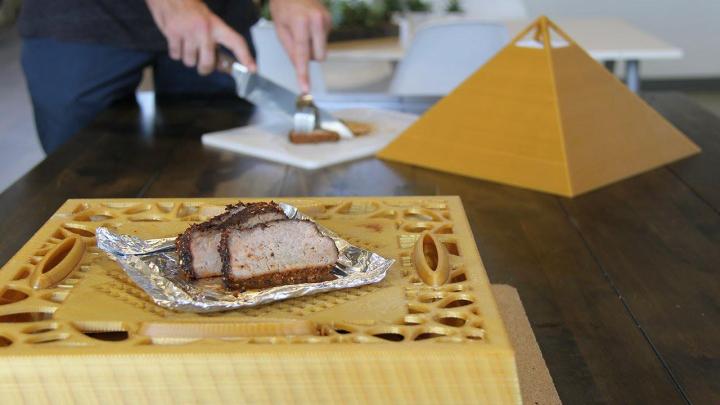
The name, Pyra, is a reference both to the Greek word for fire, pyro, as well as a nod to the pyramidal shape of the new oven. According to the team behind the device, Pyra is “a transformative device that can serve as anything from a tool in a science laboratory to a grill at your next barbecue.” This is because their technology has provided a novel way to bring heat to a variety of objects, whether or not their ultimate destination is your stomach. As the team writes, “the thermal chamber…was originally designed for cell culture incubation and other more serious applications” (though what can be more serious than cooking and eating is not clear to me).
The oven operates independently of any sort of flame source, and instead has a fan in the base of the 3D printed structure that circulates air over heating elements, and ultimately brings the temperature inside the device to a toasty 375 degrees. And to prove that there is indeed bite to their bark, the developers of Pyra decided to cook a dry-rubbed cut of beef, ultimately deemed a “delicious experiment.”
According to Studio FATHOM, the team behind Pyra, the “big vision with this project is to enable community-driven development of the tools scientists use in the lab. The plan is to make the thermal chamber designs open-source so anyone can download, customize, and 3D print their own versions.”
They continued, “In a larger sense, the device serves as a glimpse into the future of how products will be designed, manufactured, and used on both consumer and commercial levels. FATHOM is elated to be a part of this future by making the unmakeable and sharing innovative applications at the forefront of the manufacturing industry.”


